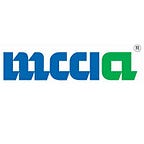Planned Centres of Economic Activity
(This article is written by Mr. Prashant Girbane, Director General, MCCIA and was published in the Hindustan Times on 30th January 2021.)
Hinjewadi employs more than four lakh people serving in the IT-ITES sectors. Pune district employs approximately 16 lakh salaried people. That makes Hinjewadi’s contribution to jobs in the district very significant at one in four. The industrial estate is spread over 3000 acres of MIDC and private land. A few hundred units in Hinjewadi contribute to exports of more than fifty thousand crores. Apart from the traffic snafus created by more than two lakh vehicles daily, Hinjewadi is a good example of a planned centre of economic activity (PCEA).
A bipartisan discussion in 1995 led to the creation of the first phase of Hinjewadi in 1998 when the political leadership decided to let IT park take priority over one more sugar factory. Over the last 22 years, the growth of this centre has translated into economic progress for all stakeholders — the local population, the companies situated there and their employees. This is just the visible impact. Along with this, the centre has also created a multiplier impact in terms of the employment created in the construction and non-IT services sectors.
Since then, we have also seen other PCEAs like the Kharadi IT Park, which is smaller in size but helps manage the spatial distribution of economic activities across the metropolitan area.
At least two more major PCEAs are in the works. They promise hope of making significant contributions to the economic progress of the metropolitan area over the next decade or two.
The Talegaon Electronics and Engineering City (TEEC) will be spread over 4000 to 6000 acres. The first 500 acres of development is expected to be completed by the end of this calendar year. TEEC’s focus on hardware products, especially electronics, to begin with, is the need of the hour.
In the digital, cyber-physical, electric vehicle era that we are already living in, a boost to electronic manufacturing is very critical.
A city well known for its automotive industry needs to reinvent itself to gear up for the era of ‘new mobility’, which would include EV, hydrogen fuel and bio-mobility. To support this journey, we have some of the enabling institutional infrastructures in the region — global auto OEMs, their supply chains, ARAI and Autocluster. By the end of this calendar year, there will be another critical addition to this family of institutions in the form of MECF (India’s largest Electronic brownfield cluster) in the MCCIA Bhosari campus.
All these institutions are stepping up their efforts to align themselves with the Mobility sector’s paradigm shift. With this institutional architecture in place, a planned well-developed zone focused on electronic manufacturing would augur very well.
Unlike Hinjewadi, which focuses on the services industry, this PCEA would primarily focus on the manufacturing sector. This might generate a relatively lesser number of jobs directly but would create many more through its supply chain ecosystem.
One of the best features of this PCEA is that 40% of its total land has been allocated for residential complexes and other supporting facilities. This would go a long way for industrial workers as accommodation and transportation are the two primary components of their monthly expenses.
Mhalunge-Maan zone is to be spread over 600 acres and promises to be another PCEA focused on the hi-tech industry. In the era shaped by exponential technologies like AI, ML, Robotics and IoT, such a cluster would be a defining milestone in Pune’s economic evolution journey. Beyond these two, there are relatively smaller, many more PCEAs in the planning stage, as per the authorities.
All these PCEAs need to be resourced sufficiently, and more importantly, innovatively, by bringing in the private sector right from the initial stages of ideation. There are quite a few lessons from past experiences, like the traffic troubles in Hinjewadi and Chakan.
While shaping up the new PCEAs, we should be mindful that infrastructure cannot be an afterthought.
To effectively realise the potential of these PCEAs, there is a need for enabling infrastructure, that must include the much-awaited international airport for passenger and cargo traffic. Hopefully, there will be adequate provision for land acquisition in the next Maharashtra Budget. We must also develop an institution and a culture of having a dedicated investor liaison cell from the municipal/metropolitan authority. These investments create jobs and economic growth for the constituency and hence deserve due attention.
Pune should ensure that these PCEAs focus on becoming a ‘knowledge-driven economy’ that generate higher per capita income and, in the process, might leave the additional labour-intensive manufacturing industries to be spatially distributed over other parts of Maharashtra. This would suit well for both Pune and the rest of Maharashtra.
